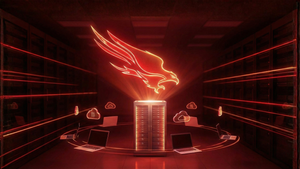Industrial Sector Grapples with Headwinds as S&P 500 Shows Resilience

While the broader S&P 500 continues its upward trajectory, the Industrials sector finds itself in a challenging environment. A noticeable slowdown in business activity data, coupled with persistently rising material prices, is squeezing profit margins and forcing industrial companies to reassess their strategies. This divergence highlights a nuanced market, where sector-specific pressures can contradict overall market optimism, posing significant implications for manufacturers and investors alike.
A Perfect Storm: Slowing Activity and Soaring Costs Hit Industrials
The current predicament for the Industrials sector is a confluence of factors creating a challenging operational landscape. As of September 23, 2025, manufacturing activity shows clear signs of deceleration. The S&P Global US Manufacturing PMI, for instance, eased to 52 in September from a three-year high of 53 in August, indicating a softer pace of expansion. New orders, a crucial forward-looking indicator, are growing only marginally, partly attributed to increased export losses stemming from ongoing tariffs. Further compounding this, the ISM Manufacturing PMI remains in contraction territory at 48.7 in August, underscoring persistent struggles in industrial output.
Simultaneously, industrial companies are battling elevated material prices, which remain among the highest levels seen since the pandemic. Reports from early 2025 already signaled that increasing input costs were eroding manufacturing profits, with raw material expenses outpacing sales growth for many non-financial manufacturing firms. This trend has continued, making it difficult for manufacturers to fully pass these higher costs onto customers due to softening demand and heightened competition. The National Association of Manufacturers' (NAM) Q3 2025 Outlook Survey, released today, confirmed these challenges, with trade uncertainty and rising raw material costs cited by 78.2% and 68.1% of manufacturers, respectively, as primary business concerns.
This dual pressure of slowing demand and escalating input costs directly impacts the bottom line, threatening the profitability and growth prospects of many industrial players. For every 1% increase in operational costs, businesses typically face a 0.5-1.5% decrease in net profit margins, illustrating the severity of the current cost environment.
Market Ripple Effects: Who Wins and Who Loses in a Tightening Industrial Climate
The current pressures on the Industrials sector are set to create a distinct divergence within the market, favoring companies with robust operational efficiencies and adaptable business models, while challenging those with high cyclical exposure or reliance on volatile commodities.
Potential Winners (More Resilient Companies):
- Automation and Technology Providers: Companies at the forefront of Industry 4.0 solutions, such as robotics, digital twin technology, and Industrial IoT (IIoT), are well-positioned. As manufacturers seek to mitigate rising labor and material costs, investments in efficiency-enhancing technologies become critical. Firms like Rockwell Automation (NYSE: ROK) and Honeywell (NASDAQ: HON), which offer industrial automation and control systems, stand to benefit from this strategic pivot.
- Maintenance, Repair, and Operations (MRO) Providers: In an environment where new capital expenditures may slow, businesses often prioritize extending the lifespan of existing assets. Companies providing essential repair services or MRO supplies could see stable demand.
- Manufacturers for Essential Sectors: Industrial companies that supply components or equipment to recession-resistant industries such as healthcare, utilities, or consumer staples may demonstrate greater resilience.
- Freight and Logistics Companies: The fundamental need for transporting goods ensures that freight and logistics providers remain relatively robust. Companies like UPS (NYSE: UPS) and FedEx (NYSE: FDX), or specialized industrial logistics firms, are likely to maintain demand.
- Companies with Strong Supply Chain Management and Pricing Power: Firms with diversified, agile supply chains and the ability to selectively pass on cost increases due to strong brands or essential products will be more resilient in this environment.
Potential Losers (More Vulnerable Companies):
- Heavy Industrial Manufacturers (Cyclical): Companies producing large capital goods, construction equipment, or automotive components are highly sensitive to economic shifts, as business and consumer spending on big-ticket items typically declines during slowdowns. Heavy equipment manufacturers like Caterpillar (NYSE: CAT) or automotive suppliers are particularly exposed.
- Commodity-Dependent Manufacturers: Firms heavily reliant on specific raw materials experiencing sharp price increases (e.g., steel, copper, aluminum) will face significant margin compression, especially if they operate in highly competitive markets with limited pricing power.
- Export-Oriented Manufacturers: Those with a high reliance on international markets will be particularly vulnerable to trade uncertainties, tariffs, and weakening global demand.
- Companies with High Fixed Costs and Leverage: Businesses with substantial fixed operating costs and high debt-to-EBITDA ratios will struggle as revenues decline and liquidity tightens.
- Residential and Commercial Construction-Related Industrials: The construction industry is often among the first to slow down, impacting manufacturers of building materials, HVAC systems, and other related industrial products.
Broader Implications: Reshaping the Industrial Landscape
The current economic headwinds facing the Industrials sector are not isolated events but rather integral parts of broader industry trends that are poised to reshape the manufacturing landscape. This period of pressure is likely to accelerate several long-term shifts, driving consolidation, technological adoption, and a renewed focus on supply chain resilience.
Firstly, the squeeze on profitability will likely lead to a period of strategic recalibration across the sector. Companies will be forced to scrutinize discretionary spending, optimize operational efficiencies, and potentially delay non-essential capital projects. This environment often triggers industry consolidation, as smaller, less capitalized firms may struggle to survive, while larger, more financially robust companies may acquire distressed assets or competitors to expand market share and capabilities.
Secondly, the emphasis on mitigating labor and material cost pressures will significantly accelerate investment in advanced manufacturing technologies. Concepts like automation, robotics, digital twins, and the Industrial Internet of Things (IIoT) will move from strategic goals to immediate necessities. Companies that embrace these technologies will gain a competitive edge by enhancing productivity, optimizing resource allocation, and improving supply chain visibility and agility. Conversely, firms slow to adopt these innovations risk falling further behind.
Thirdly, the current challenges underscore the critical importance of robust and diversified supply chains. The disruptions experienced in recent years, combined with current material price volatility, are pushing companies to de-risk their sourcing strategies. This could involve nearshoring, reshoring, or diversifying suppliers across different geographies to build greater resilience against future shocks. Regulatory and policy implications, particularly around trade and tariffs, will also continue to play a significant role, influencing sourcing decisions and international market access. Historically, similar periods of economic pressure have often led to significant restructuring and innovation within industrial sectors, setting the stage for the next wave of growth for adaptable players.
What Comes Next: Navigating Uncertainty and Seizing Opportunities
As the Industrials sector navigates these turbulent waters, several key areas will demand close attention from industry leaders and investors alike. The short-term focus will undoubtedly be on cost control, inventory management, and preserving liquidity, while the long-term outlook will hinge on strategic adaptation and technological foresight.
In the immediate future, companies will likely continue to face pressure on their margins. We can expect to see further adjustments in production volumes as firms align output with softening demand and work through existing inventories. Strategic pivots will be crucial, with an increased emphasis on lean manufacturing principles, automation investments to reduce labor dependency, and aggressive negotiation with suppliers to mitigate material cost increases. Companies with strong balance sheets and access to capital will be better positioned to weather the storm and potentially make opportunistic acquisitions.
Looking ahead, the divergence between resilient and vulnerable companies will likely widen. Those that proactively invest in digital transformation, build agile and diversified supply chains, and focus on high-value, specialized products or services will emerge stronger. Market opportunities may arise in areas such as industrial software, predictive maintenance solutions, and advanced materials that offer cost efficiencies or performance advantages. Potential scenarios range from a prolonged period of modest growth for the sector, characterized by ongoing margin pressure, to a more pronounced downturn if broader economic conditions deteriorate further. Investors should closely monitor key economic indicators like manufacturing PMIs, new order data, and commodity price trends, as well as individual company earnings reports for insights into how specific firms are managing these challenges.
Conclusion: A Sector in Transition
The Industrials sector stands at a critical juncture, contending with a unique blend of slowing business activity and persistent cost inflation, even as the broader S&P 500 maintains its momentum. This period marks a significant transition, where operational excellence, technological adoption, and strategic agility will be paramount for survival and growth.
The key takeaway is that not all industrial companies will experience these pressures equally. A clear divide is emerging between those that possess the flexibility and foresight to adapt to a more challenging economic environment and those that remain heavily exposed to cyclical downturns and commodity price volatility. Investors should conduct thorough due diligence, focusing on companies with strong balance sheets, innovative product portfolios, and proven capabilities in supply chain management and cost control.
Moving forward, the Industrials sector will likely continue its evolution towards a more automated, efficient, and resilient future. The companies that successfully navigate the current headwinds by embracing digital transformation and strategic repositioning will be the ones that thrive in the coming months and years. Watch for continued investment in advanced manufacturing, strategic consolidations, and shifts in global supply chain dynamics as indicators of the sector's trajectory.
This content is intended for informational purposes only and is not financial advice
More News
View More




Recent Quotes
View More
Quotes delayed at least 20 minutes.
By accessing this page, you agree to the Privacy Policy and Terms Of Service.